Diversivore in Japan Series:
Kochi Yuzu Festival
Share this Post
DISCLOSURE
I traveled to Japan and the Kochi Yuzu Festival in order to appear on the TV show 'Who Wants to Come to Japan'! I was invited by the producers and my travel and costs were covered, however I was NOT asked to share any posts about it with my readers. Instead, I'm simply doing so because it was an amazing adventure, and I want to tell you all about it!
To see all of the posts in this series, click here.
Hello there! It's been much too long since I shared more about my adventures in Japan. I've still got so much to tell you about - and so many recipes to share! But first, a little recap.
I was invited to Japan in late 2018 in order to explore my passion for ponzu shoyu and yuzu citrus on the TV Tokyo reality show 'Who Wants to Come to Japan' (世界ニッポン行きたい人応援団)! The basic overview of how this all happened and what I got do do while I was there can be found here (part 1) and here (part 2). The time I spent in Japan was amazing in every way, and the whole adventure will probably keep me busy with new posts for quite a while yet. So far I've really only explored the basic story, but starting with this post, I'm going to get into some of the details of my adventure. I hope you enjoy!
In this post, we're going to look at the remarkable yuzu fruit, and visit the wonderful Kochi Yuzu Festival in Shikoku, Japan.
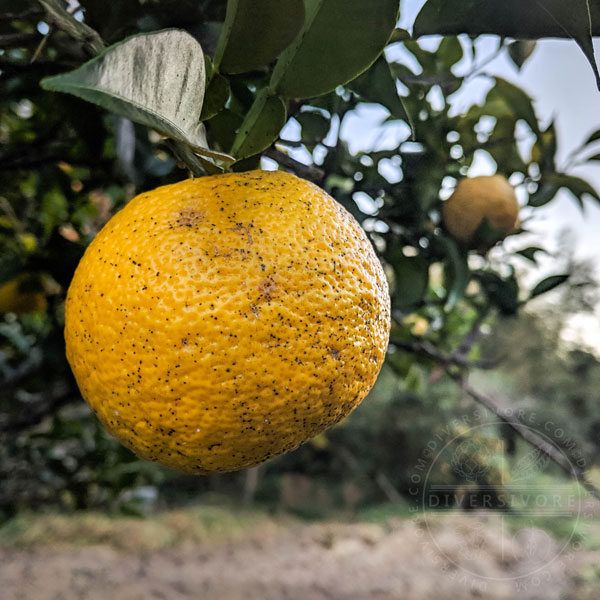
What is Yuzu?
Yuzu is a citrus fruit primarily grown in Japan and Korea (though it originally hails from China, and is still grown in small quantities there). It's also one of my favourite fruits in the whole world.
There are two very important aspects of citrus that have led to a complicated diversity of fruits across the world. First, they hybridize readily. Enthusiastically, even. Most of the citrus fruits we eat today are the results of hybridization between wild citrus fruits, or between other hybrids. Grapefruits, lemons, limes, sweet oranges, Seville oranges, and Meyer lemons are all citrus hybrids - and that's just to name a few. The second important aspect is that most citrus fruits, and especially most citrus hybrids, don't grow 'true' from seeds. What this means is that the seeds from these fruits will not grow into trees that are identical to their parents. If you plant a lemon seed, you'll probably get something that looks more-or-less like a lemon, but it may not taste the same. If you're lucky, it might taste different in a good way, or it might even taste better than the parent type, but there's a pretty good chance that it won't be worth growing. Yuzu actually does grow true from seeds, but these seed-grown trees get very tall and very thorny, so most commercial yuzu production uses grafted dwarf trees.
Because citrus hybridizes so readily, and because most of the seeds don't grow true to their parent trees, there is an astounding variety of citrus across the world, and especially in East Asia (the ancestral home of most wild citrus species). Some, like the sweet orange, lemon, and lime, have become globally popular. These fruits (and their subvarieties) are grown around the world by grafting genetically identical bud stock to a strong root stock. In this way, farmers are able to cultivate a single variety without having to worry about seeds or hybrids. But many other citrus varieties - like yuzu - remain only locally common, and are largely unknown outside of their home regions.
There are a number of citrus fruits that are incredibly important and beloved within Japan, yet little known elsewhere in the world. Yuzu is perhaps the most important, and most popular of these fruits. I've had a lot of people ask me what yuzu is like, and it's always difficult to describe a taste, but picture a lemon with a powerful fragrance, unique herbal notes, mild bitterness, and a somewhat less sharply acid flavour and you'll start to get the idea. Yuzu is highly valued in Japan for both the fragrant zest and the juice, both of which are used to make a wide variety of sweet and savoury foods.
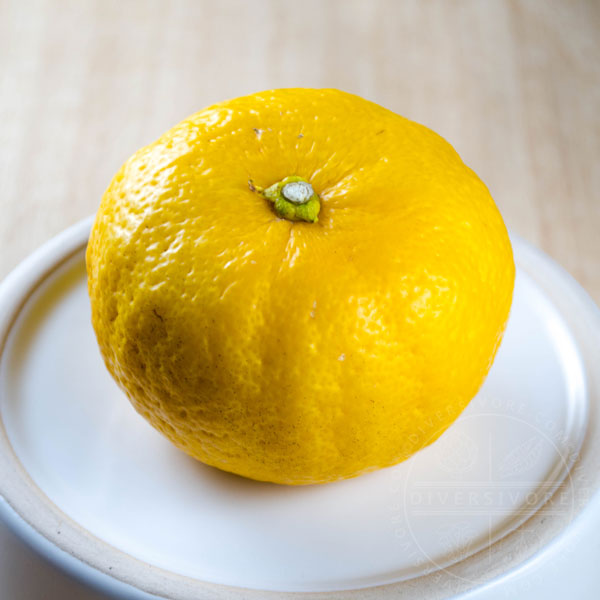
Diversivore & Yuzu
Given that a TV crew flew me half-way around the world just to get to experience this fruit, it's probably worth explaining why it's so special, and why I'm so fond of it.
Before traveling to Japan, I'd never actually gotten to cook with - or even handle - a whole yuzu. Japan grows a lot of yuzu, but very little is exported at present. This is because domestic demand for the fruit is high, and because exporting citrus is a very complicated business (many citrus producing countries like the USA, Brazil, and Australia have very strict import restrictions owing to concerns over the potential spread of pests and diseases that could impact the local industry). Processed products, however, are easier to export and store - which is why it's fairly easy to buy yuzu juice. It's not cheap, mind you - but it's not too hard to find. So, when I set out to try and make my own recipe for ponzu shoyu (a savoury sauce made with soy sauce, dashi, and citrus juice), I started using yuzu juice.
It was that ponzu recipe that first caught the attention of the producers and scouts for Who Wants to Come to Japan. They were intrigued by my fascination with ponzu shoyu, and by my desire to learn more about yuzu.
There's actually quite a lot more to my adventures with yuzu still to come, and I'll be sharing a lot more about this amazing fruit in the future, but for now I want to talk about the Kochi Yuzu Festival, and the incredible citrus spectacle that first greeted me when I set foot in southern Japan.
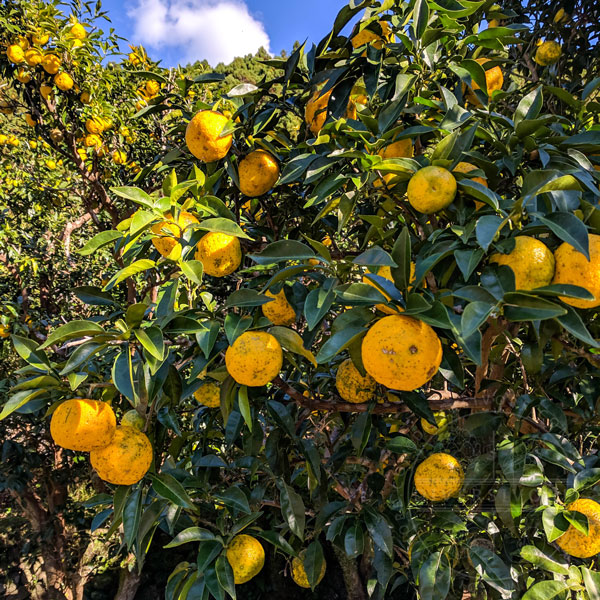
Shikoku's Yuzu Bonanza
One of the most entertaining and exciting things about filming Who Wants to Come to Japan is the fact that the producers don't tell you what you're going to do. Every step is a surprise, and every person you meet and place you go is kept a secret from you. I found out we were going to Shikoku when we arrived at our gate at the airport. I did have my suspicions mind you - Shikoku (and specifically Kochi prefecture) is where the vast majority of Japan's yuzu is grown, and I am a relentless planner/researcher, so I'd done my homework. But nothing could have prepared me for what I was about to experience.
To say that I was overwhelmed by Shikoku would be an understatement. The mountainous island is the second smallest and second least-populated of Japan's five main regions (only the tropical island chain of Okinawa to the south is smaller), so I was certainly expecting something very different from the bustling megalopolises of Tokyo and Osaka. Indeed, the difference is apparent the moment you touch down at the regional, single-runway Kochi Ryoma Airport - but to a Canadian, it felt comfortably familiar. After all, Canada is the second largest country in the world, but the 39th most populated - so most of us are used to a little bit of space. We collected our bags and headed off for breakfast at a small restaurant, where I attempted to wake up a bit. After we sat down at our table, a couple of young girls who'd seen us enter came over to our table, lined up, and very politely said hello to me in careful, well-rehearsed English. It was adorably charming - and it emphasized the fact that we'd stepped into a much quieter corner of Japan where Western tourists weren't an everyday thing. Saori, my wonderful and well-traveled translator, commented on how new and different it was even for her.
Certainly, Kochi prefecture's tourism statistics are a far cry from the incredible 14 million foreign visitors that visited Tokyo in 2018. In fact, Kochi is one of the prefectures least commonly visited by international travelers. But I've spent a fair bit of time in areas far, far more rural and removed than Kochi - so while it was certainly a change of pace, I wasn't exactly caught off guard. Or at least I wasn't, until I started seeing yuzu. Specifically, I was surprised (and delighted) by the sheer quantity of yuzu. I had come from Canada, where whole yuzu was (and is) incredibly hard to get a hold of, and stepped into a world where fields, yards, and roadsides were absolutely packed with the ripe, bright yellow citrus. As soon as we left Kochi city and headed out to the smaller towns and villages (a feat that doesn't take very long at all), we were surrounded by yuzu trees, absolutely overloaded with ripe, ready-to-pick fruit. With our breakfasts finished, we packed into a van and set off to our filming location (which, I'd like to remind you, was being kept a secret from me). All I could do at first was stare out the window at the yuzu bounty as we wove our way into the mountains, as there was no time to stop. By the time we got to our destination, I was more than ready to head out to actually experience yuzu. Luckily for me, we'd made our way to what might be the single most yuzu-loving spot in all of Japan.
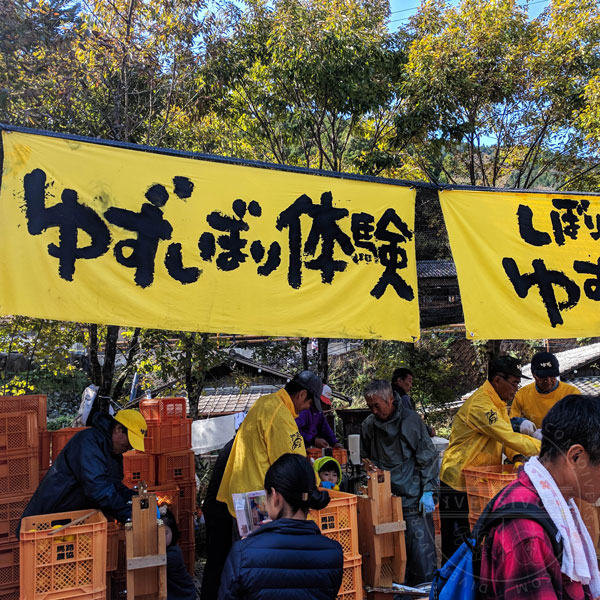
Yuzu Hajimaru Festival
As I stepped out of our van and inhaled the crisp November air, I was immediately hit by the scent of yuzu. Literal tons of the bright yellow fruit were passing through small wooden presses operated by farmers and volunteers. The sour fragrant, pale yellow juice poured out into containers, while the crushed fruits were placed into large plastic tubs.
The incredible aroma that filled the air that day is, in some ways, one of the toughest things I've ever had to write about. Printed words, no matter how carefully chosen or poetic in scope, can only begin to convey these experiences to others. Odors have a powerful impact on our brains, directly accessing the limbic system (the regions of the brain responsible for emotion, long-term memory, motivation, and more). As such, we experience, remember, and related to scents in ways that impact us on deep, even subconscious levels. The moment I inhaled, I knew that I was locking the memory of the moment into the deepest, most secure corners of my mind.
Experiencing yuzu in this way, after all this anticipation and research, was a little bizarre. The crisp, citrusy, herbal scent felt somehow expected - even familiar. It the answer to a question I'd been trying to put together for years, and it slotted itself into my brain like the final piece fitting into a jigsaw puzzle. True, I'd been using the bottled juice for years - but this was more powerful, and much more complex. It's an intense, incredible aroma - the kind that you'd want to leave behind only to reset your senses, thus allowing you to enjoy and appreciate it all over again. It is, I'm happy to say, indelibly burned into my memories.
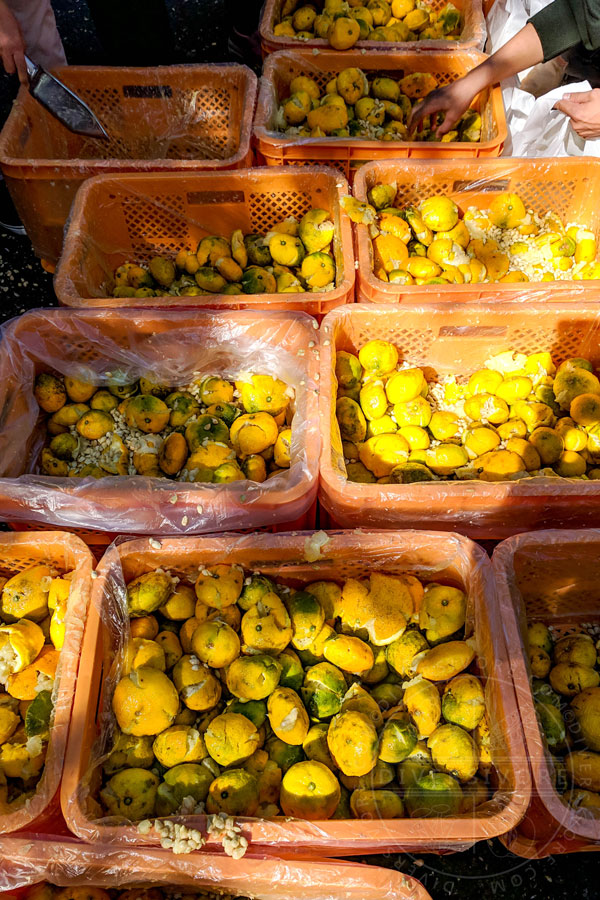
Kochi prefecture is the heart of yuzu production in Japan, responsible a full 50% of the national harvest. Yuzu fruits have long been cultivated (or gathered from the wild) in the region, but the large-scale agricultural focus on yuzu production only came about as a result of the decline of the local lumber industry in the 1960s. Mountainsides and river valleys cleared by logging made perfect sites for planting citrus orchards, and the industry took off rapidly. Citrus - and yuzu specifically - has become central to the identity of Kochi, and many of the prefecture's major cultural events, historical sites, and heritage items are directly or indirectly connected to yuzu. In particular, one of the most anticipated events is the annual Yuzu Hajimaru Matsuri (ゆず はじまる 祭), or the Yuzu Harvest Season Festival. Held in the small village of Umaji, the event marks the beginning of the yuzu harvest season, and is celebrated with plenty of food, festivities, and the first pressing of yuzu for juice. As I mentioned earlier, it's the yuzu pressing in particular that perfumes the air, as thousands of fruits are dropped, one at a time, into small wooden presses and squeezed to extract the valuable (but rather meager) juice. I was invited up to give the presses a try, and given a few pointers along the way. It turns out that you need to squeeze just hard enough to get the most of the juice (which is quite meager when compared to, say, an orange or lemon), but without crushing the pith too much, or you'll end up with some of the more bitter solids in the juice. As a side note, I wish I had a few more photos from this event, but I had to wait for filming breaks to pull out the camera.
As I wandered the festival and took in the sights (all while being filmed, mind you), I started to really get a sense of just how much you can do with yuzu, and how diverse it is an ingredient. I'll be writing a lot more about how to work with yuzu in a future article (and in some related recipe posts), but for now I'll let the food do the talking for me.
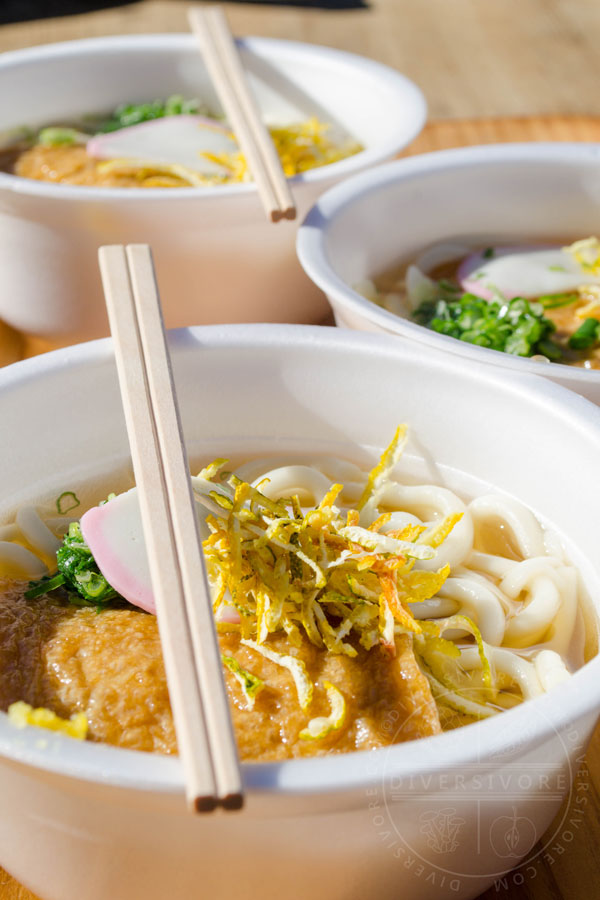
Bowls of yuzu udon soup. The yuzu infuses the broth, while the shredded zest decorates and adds flavour. Udon is thought to have originated on Shikoku, and the four prefectures there are all quite proud of their udon dishes.
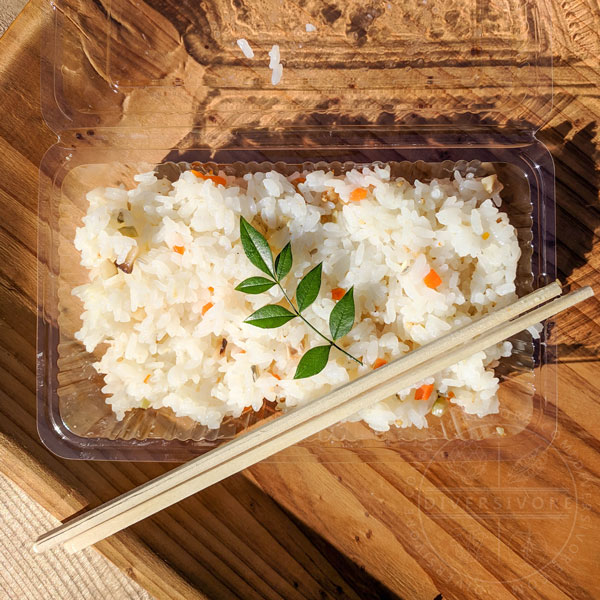
Yuzu and mushroom gohan (mixed rice). I think the mushrooms were matsutake - a much loved, rather pricy fall delicacy. Matsutake is most commonly paired with another Japanese specialty citrus called sudachi, but needless to say, the focus here was yuzu.
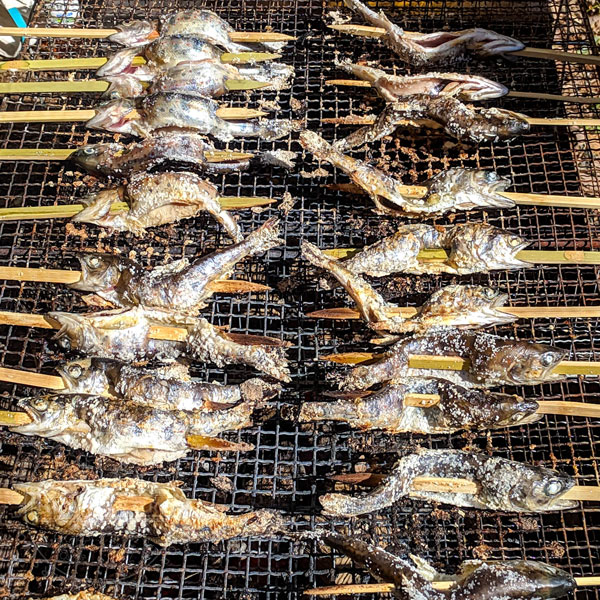
Grilled ayu (also called sweetfish) on skewers over hot charcoal. Ayu is much beloved in Kochi prefecture and elsewhere in Japan, and is generally cooked whole on bamboo skewers in this fashion. Though I didn't get a chance to ask anyone, I would assume that these ayu came directly from the nearby Yasuda river.
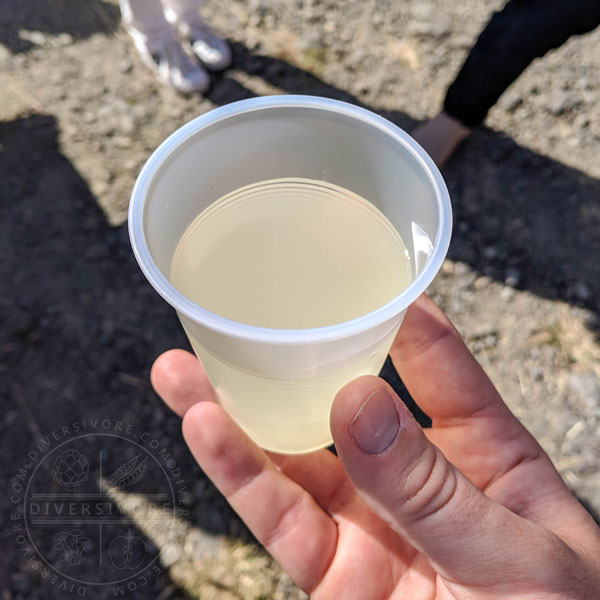
Gokkun - a sweet beverage made with yuzu juice, honey, and water. The name gokkun is an onomatopoeic expression meant to sound like gulping or swallowing. It's delicious and incredibly refreshing. Fair warning, the word gokkun also has a very, VERY different, and decidedly adult meaning in Japanese, so I recommend adding the word yuzu to your Google searches... and not clicking the 'images' tab in mixed company.
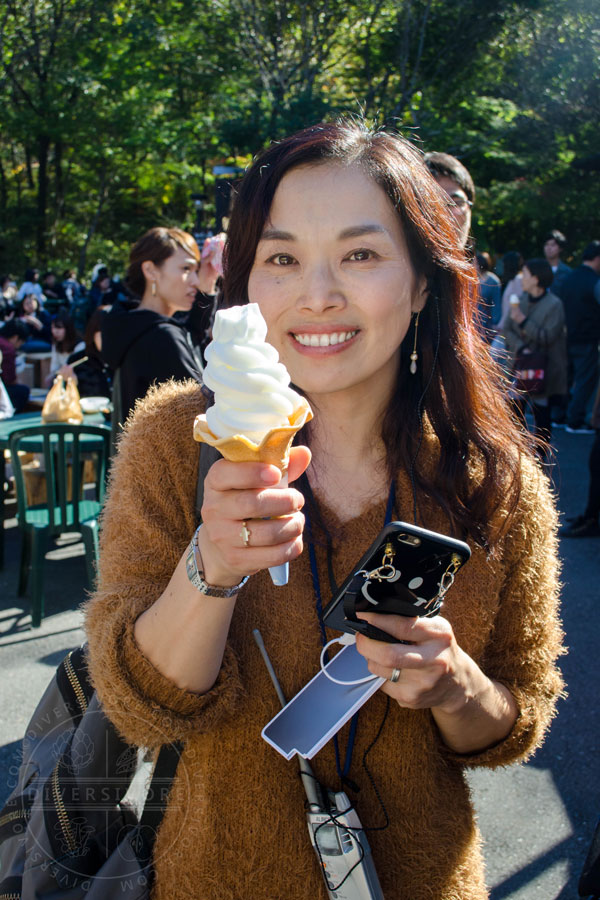
My wonderful translator (and now friend) Saori with a yuzu ice cream cone. Thankfully, the crew had to shoot stuff other than me, so we got to take a few breaks for treats. Yuzu ice cream definitely qualifies as a treat.
Umaji - A 'Most Beautiful' Village
I wish I'd been able to spend more time at the Kochi Yuzu Festival - but our filming schedule was absolutely packed, and a lot of the locations we traveled to were quite far apart. Still, after only a few short hours, I was smitten with the village of Umaji, and I'd be doing you a disservice if I didn't share more about it.
Umaji is nestled in the mountains of Eastern Kochi, fairly close to the border with neighbouring Tokushima prefecture, and about 20 km inland from the coastal town of Yasuda. The winding route from coast to Umaji follows the Yasuda river, and supposedly takes about 30 minutes to travel on an quiet day. But on the day of the festival we had to pull over quite a few times in order to accommodate the bustling tour bus traffic navigating the tiny one-lane bridges and narrow mountain roads. Umaji reveals itself rather suddenly between the mountains, settled into a small valley that's split by the rocky river and absolutely packed with yuzu trees.
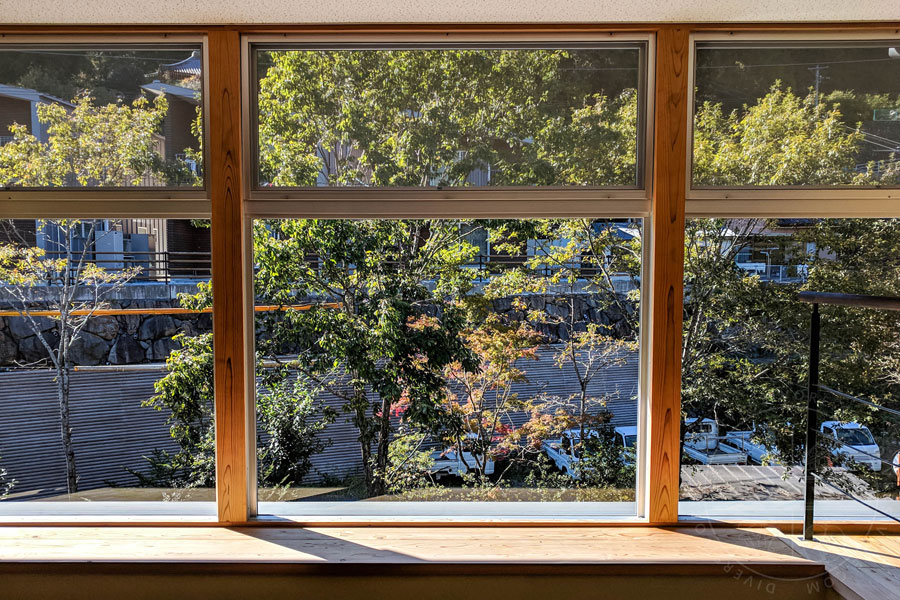
Umaji is a small village, with only some 750 or so residents (though many thousands more swell the town during the festival). As such, the large wooden Yuzu-no-mori building on the western side of the river is fairly easy to find. It was built by the regional yuzu farming cooperative to serve as combined processing facility and interpretive center. Inside the bright and welcoming building, you can find information about the region, and immaculate facilities packing yuzu juice and other products. It was outside of this facility that we came across the small but eye-catching sign shown below.
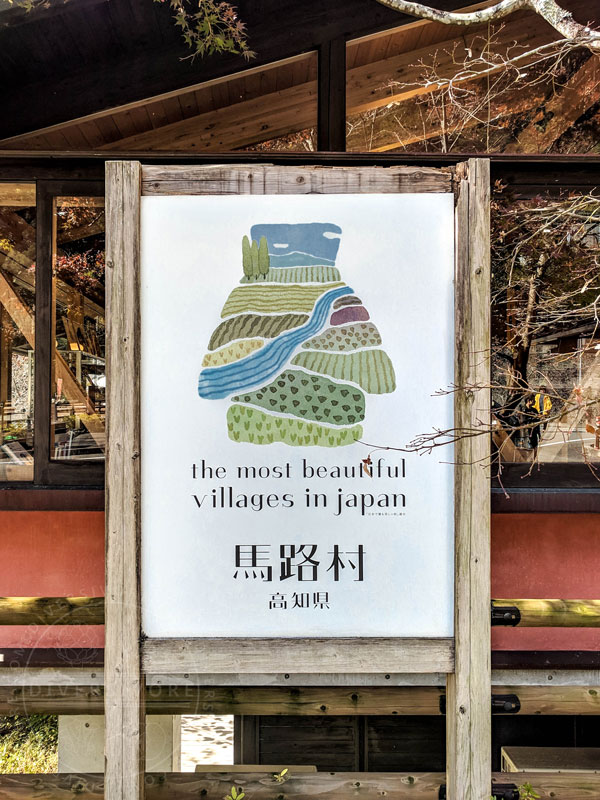
The Association of Most Beautiful Villages in Japan (「日本で最も美しい村」連合) is a non-profit group dedicated to highlighting and promoting small, picturesque locations all around the country. Umaji became a member of the organization in 2008, and I can confidently state that its membership is definitely warranted. As I mentioned above, I wish I'd had time to take more photos - but I think the few pictures I do have will be more than enough to give you an idea of how lovely this little corner of Japan truly is. I hope I can make it back again some day - ideally for another Yuzu festival.

These massive hand saws, burls, and bent wood hoops were sitting in front of a small shop on a side alley. Signs of Umaji's logging and woodworking history can be found in many places, though it's clear that yuzu is king these days. I should not that this picture isn't from a museum or display - we simple wandered past it while walking through the village.
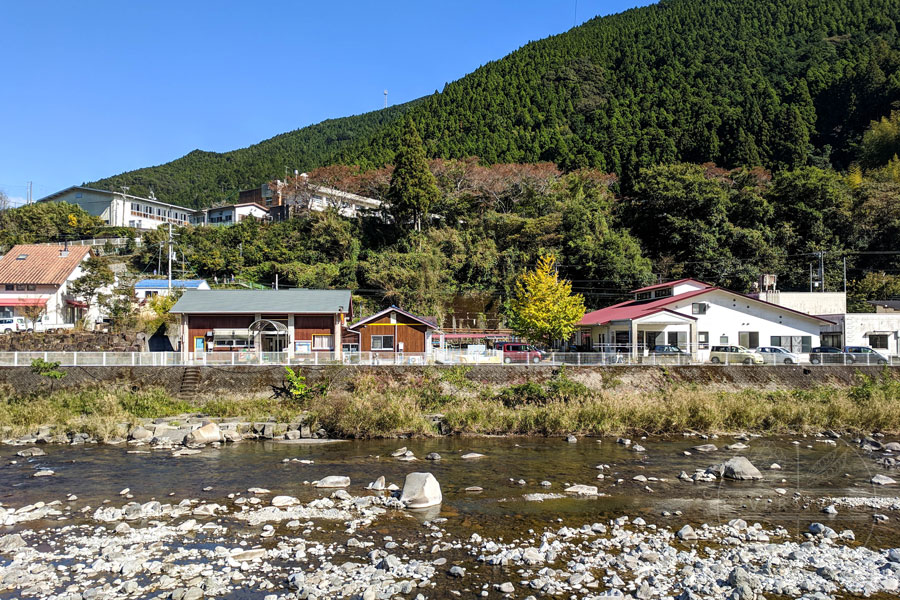
A view of the Yasuda river from the western side of Umaji. 96% of the village area is forested, and 75% of this is protected. Kochi prefecture is one of the sunniest spots in Japan, so beautiful days like this are common. The cool morning air quickly gives way to mid-day heat even in the late fall and early winter. When we arrived, the temperature was around 15°C (59°F), but it had risen to nearly 25°C (77°F) by the time we left.
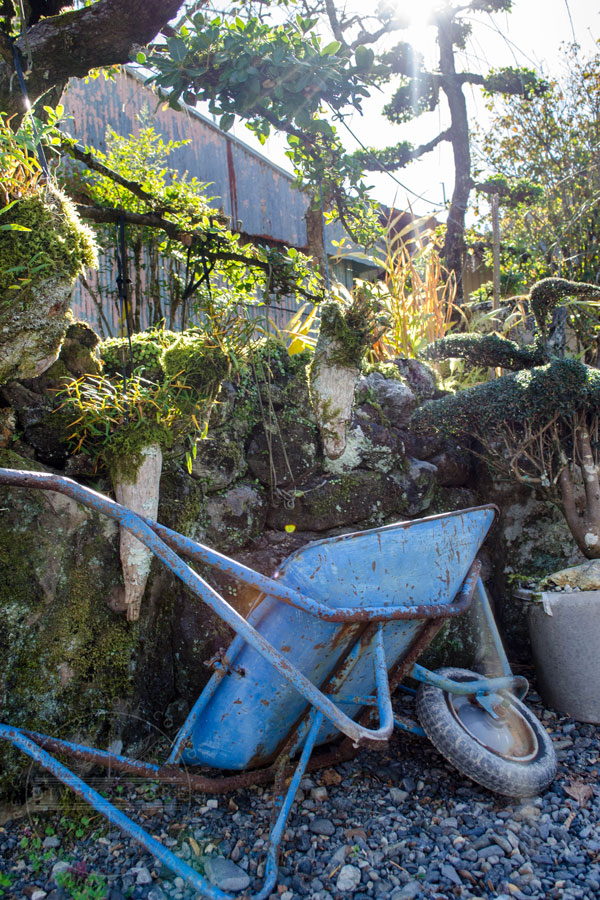
This small rocky garden space was between a few buildings and just down the street from Yuzu-no-mori building.
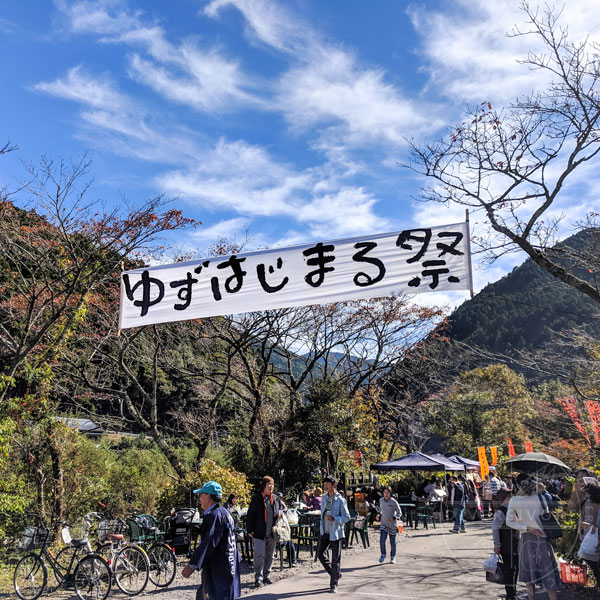
A banner for the Yuzu Hajimaru Matsuri (Festival), stretched across a walkway in Umaji. By late October/early November when the festival takes place, many of the deciduous trees will have started to turn colours or lose their leaves, while the prolific cedars on the mountainsides remain green all year round. The yuzu and other citrus trees stays green as well, and are (of course) covered in beautiful fruit at this time too.
My time filming with Who Wants to Come to Japan was, but the incredible diversity of locations we visited meant that I found myself wishing I could stay a bit longer to explore. I hope to make it back to Kochi and to Umaji some day - ideally during yuzu season of course.
If you want to learn more about traveling to Kochi prefecture, I suggest checking out their wonderful tourism site. You can find out more about yuzu-related tourism in the area by checking out the Yuzu Road. Sadly, the global COVID pandemic shut the festival down for a little while (along with Japanese tourism in general), but things are starting to return to their pre-pandemic state now. Still, it's best to research and plan ahead as much as you can in order to ensure that your travels go as smoothly as possible.
If you want to learn more about Umaji, you can visit the town's official site here, or the tourist site here. You can also find out about the various yuzu-based products made by the Umaji Agricultural Collective. (Note: these sites are in Japanese only)
As for the Yuzu Hajimaru Festival itself, there isn't a specific website I can link you to for more information. The festival itself happens in early November, though the actual date can vary depending on the timing of the yuzu harvest. The best way to get information about what's happening and when is to contact Tourism Kochi (who can communicate in English), or to contact someone at Umaji Village (if you speak Japanese). If you're already in Kochi prefecture and you want to head to Umaji to see where the festival will be held, the address is 3888-4 Umaji, Umaji Village, Aki-Gun.
There's a lot more to yuzu, ponzu, and my Japanese culinary adventures that I'm looking forward to sharing with you, so I hope you'll stay tuned and follow along with me. You can subscribe for updates, or check out all of the posts published in this series so far.
Share this Post


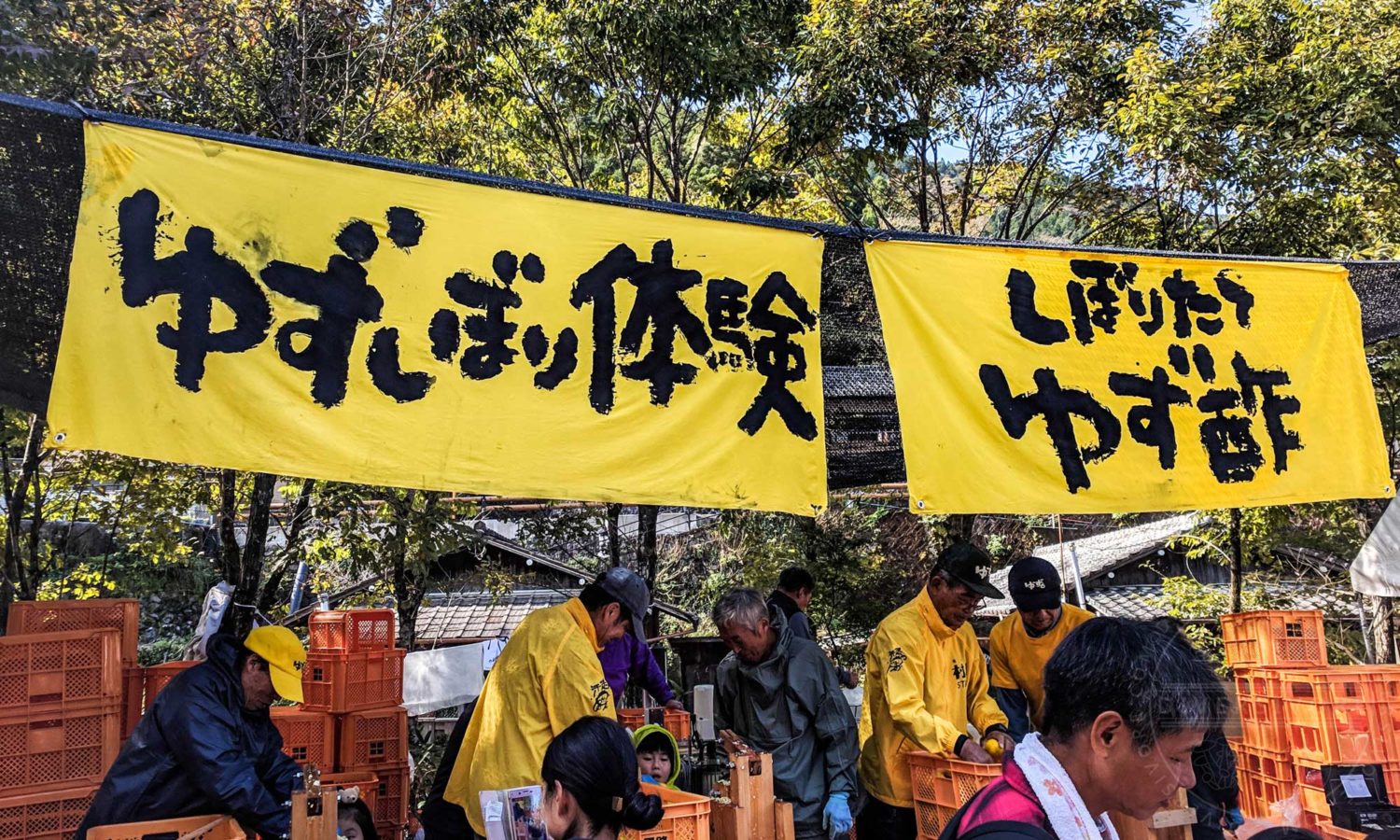
Comments
Such an amazing experience you had! Getting to sample yuzu as you did, instead of the bottled variety would have been incredible. Some day I’d love to return to Japan . . . sigh . . . (who knows when) and see more than just Tokyo. There’s nothing that can compare to eating food from it’s own terroir.
What an amazing experience!! I have never been to Japan but it is definitely on my bucket list.
Wow, what an incredible experience! I loved seeing the sunny side of Japan. 🙂 I was introduced to yuzu when I first moved to Vancouver about 5 years ago. I worked with Chef Alex Chen who made the most delicious sauce with yuzu for a dessert. It was beautiful.
What a wonderful experience! I have visited Japan, and I’m sad to say that I never tried yuzu while there. I love your line about inhaling the aroma and locking in the memory of the moment. Thanks for sharing!
Wonderful post, Sean! Kept me captivated. You know my love for Japan and it reminded me dearly of my experiences, in very different provinces, landscapes, and climate though! I have never tasted a yuzu fruit nor anything made with it, what a shame! But I could almost smell it through your words and pictures, so thank you!
I had no idea of the rich culture around yuzu! I love using the yuzu juice in cooking but it is hard to find, now I know why. Also, I’d like that yuzu ice cream, yum!
What an amazing experience! I’ve had yuzu juice before and there’s a restaurant here that orders it in fresh when they can. The grated zest smells absolutely incredible…I can barely imagine how the air during the festival smelled! This sounds like an area of Japan I would love to visit…the rugged country and simple farming communities are a big draw for me.
In the last year we’ve become obsessed with Koji. It started with a trip to Nakagama’s in Lethbridge where I bought some Koji rice. Shaun brewed some sake and now we’re fermenting koji black eyed peas and marinating our chicken with home made shio koji. I can see how it’s easy to get obsessed with one aspect of Japanese cuisine and study it for YEARS.
Oh my goodness what a spectacular post and adventure!! I adore the passion with which you’ve written about your fantastic journey! I seriously can’t WAIT to read more!
Wow, I will have to put Japan on my bucket list! I would love to try yuzu udon and yuzu ice cream. Sounds like an amazing experience! I wonder how Yuzu would work in replacing lemon or orange in baking pies. I would love to smell the citrus-y fruit and try incorporate its zest in things.
Yuzu is fantastic on a lot of Japanese food. Have you tried it with fresh-picked apples?
Wow that sounds amazing! I live in Washington state and recently planted a yuzu tree in my yard. Hopefully, I’ll have a yuzu bounty of my own in a few years!
Hallo, it works, I planted a yuzutree three years ago and already had several fruits. I love this fruit🙋🏼😍